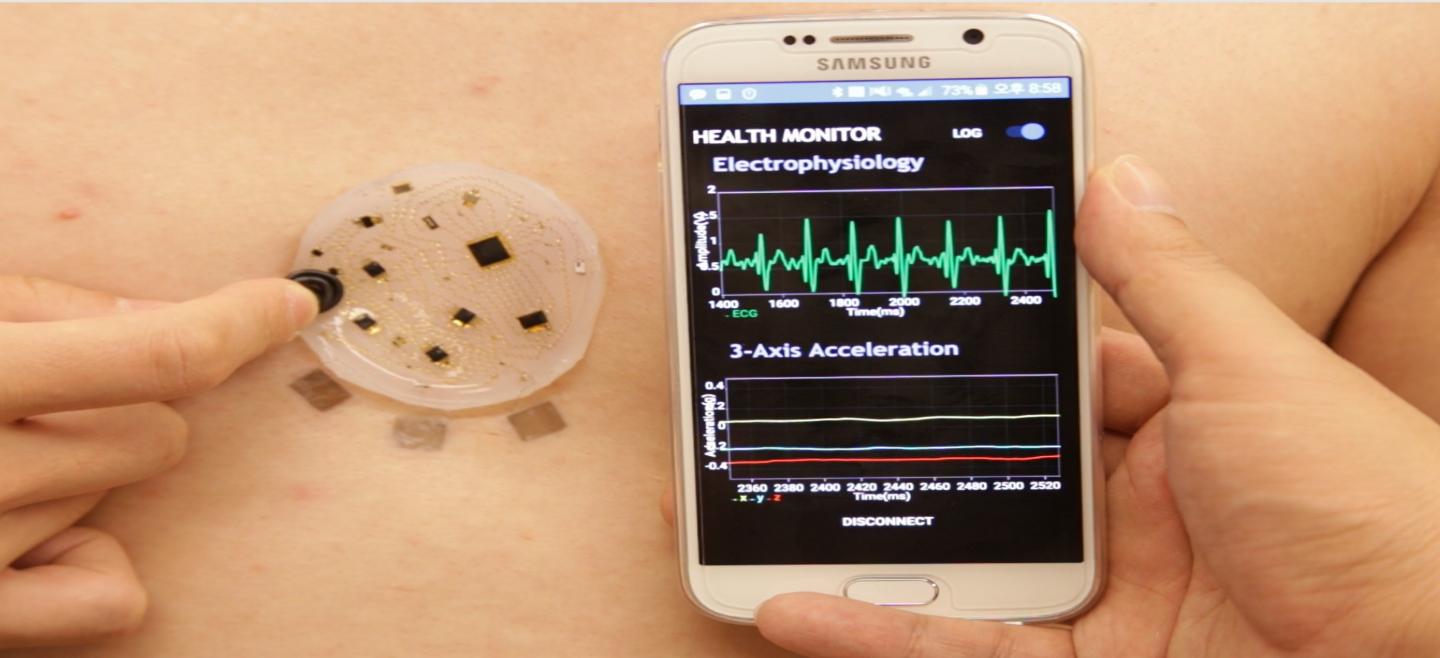
The system, which fits onto a silicone disc about 4cm in diameter, is flexible enough to follow the curves of the body and can be stuck just about anywhere, according to its developers at Daegu Gyeongbuk Institute of Science and Technology. Team leader Kyung-In Jang, a professor of robotics engineering, and collaborator John Rogers, director of Northwestern University's Centre for Bio-Integrated Electronics in Illinois, describe their research in a paper in Nature Communications.
The system consist of 50 electronic components monitoring muscle contraction, heart rate, respiration and other signals, connected by 250 three-dimensional wire coils configured in a spider-web design that allows the components to be packed in compactly. The system is constructed by stretching the silicone base with the components attached, then attaching arc-shaped connectors made from layers of gold, chromium and polyimide conductive polymer firmly only at one end of each arc. When the tension in the base is released, the coils pop up into their three-dimensional shape, which coils like the stem of a vine.

The three-dimensional shape of the coils allows them to stretch in any direction without breaking, while the layout minimises signal interference and noise. The entire system is powered wirelessly by a clinician’s smartphone which receives its data
"Combining big data and artificial intelligence technologies, the wireless biosensors can be developed into an entire medical system which allows portable access to collection, storage, and analysis of health signals and information,’ said Prof Jang. "We will continue further studies to develop electronic skins which can support interactive telemedicine and treatment systems for patients in blind areas for medical services such as rural houses in mountain village."










IET sounds warning on AI doll trend
I agree that we need to reduce cooling water demand for servers. And yes, generative AI consumes a large amount. But what about BitCoins? Their...